Have you ever wondered why some sales teams seem to close deals effortlessly while others struggle to keep up?
The secret often lies in a well-structured sales process. Sales representatives need a clear framework of activities to make more sales in less time. But, building a sales process is not an easy task.
This guide will walk you through the important steps to create an effective sales process tailored to your business needs. We’ve outlined the steps to create a consistent sales process for your business and highlighted how a powerful CRM tool can enhance sales process management.
Watch this quick video to gain insights into the sales process and learn efficient sales management techniques –
What Is a Sales Process?
A sales process is a set of actionable steps that your sales team follows to turn prospects into customers. Think of it as a roadmap that guides your team from the first contact with a potential client to closing the deal.
The selling process involves stages like prospecting leads, qualifying leads, presenting your product, handling objections, and finally, sealing the deal. Each step is designed to move the prospect closer to making a purchase.
It allows your sales reps to know exactly what to do at each stage, reducing confusion and increasing efficiency. Plus, it makes tracking progress and identifying areas for improvement much easier. By understanding and refining your sales process, you can boost your team’s performance and drive more revenue for your business.
Why Do You Need a Sales Process?
Before we explore the steps for creating a successful sales process, let’s first answer an important question —
Why do you even need a sales process?
A simple answer to this question is efficiency.
Think of it like this –
You have plenty of leads coming in. However, many of these leads drop off your sales cycle and do not make it to the final stage.
You wish to discover what is causing this, but without a standardized process, you cannot demarcate various stages and determine what results in these lost stages.
You need to follow a defined process to ensure that your sales activities are not wasted and yield the expected results.
A sales process can help your team understand the actions that drive conversions. It can help everyone stay aware of what’s coming next, better equipping them to take the necessary sales steps.
Here are some benefits of having a clearly defined sales process –
1. Get More Conversions
A clearly defined sales process can significantly boost your conversion rates.
By outlining each step, from initial contact to closing the deal, you can ensure consistency and efficiency in your sales approach.
Moreover, a well-defined process helps in tracking performance and making data-driven improvements, ultimately leading to more successful conversions and a higher return on investment.
2. Understand Customer Needs
A sales process allows you to optimize customer experiences and make them more personalized.
It is designed around customer needs and expectations. With valuable insights into customer behavior and preferences, you can craft delightful experiences that drive conversions.
A CRM tool can significantly enhance your customer experience by streamlining and personalizing your interactions. By centralizing customer data, it enables quick access to customer histories, preferences, and previous interactions, allowing for more personalized service.
Here are some key ways a CRM can improve your customer experience:
- Centralizes customer data for quick access
- Personalizes interactions based on customer histories
- Automates follow-ups and reminders
- Provides analytics for deeper customer insights
- Streamlines communication across different channels
3. Discover Roadblocks
A clear sales workflow provides better visibility into all sales activities, keeping you informed about everything happening.
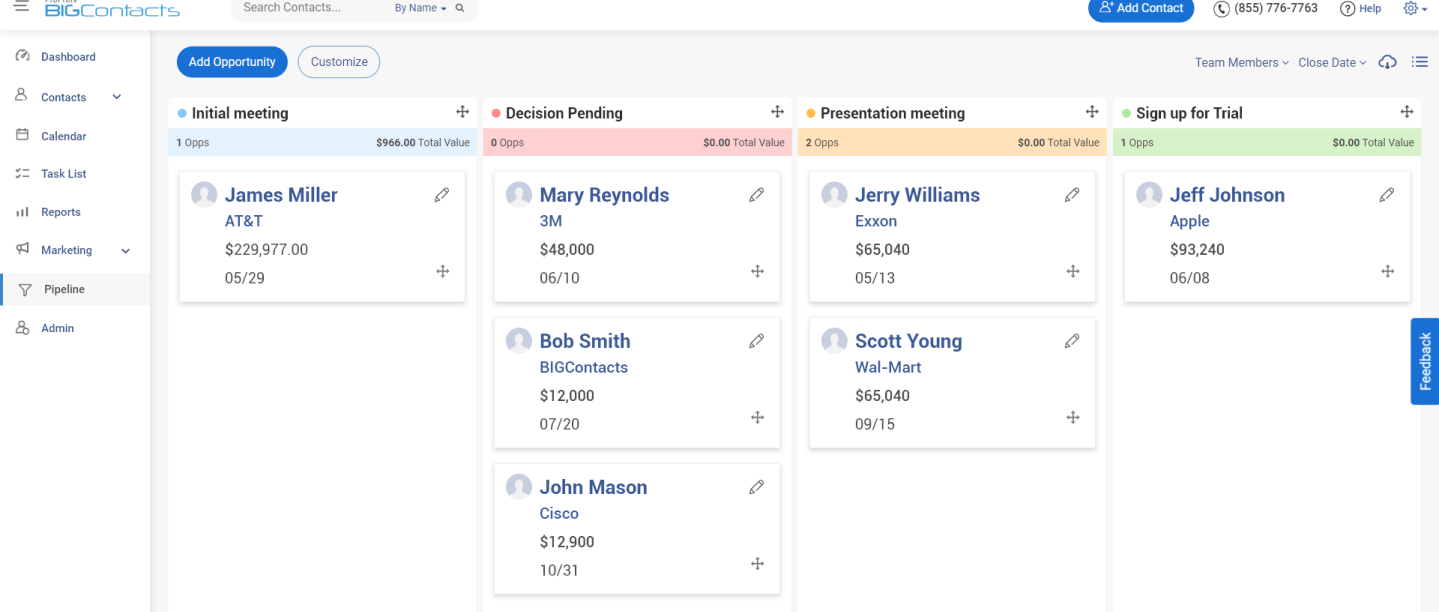
By understanding how leads move through the sales funnel, you can spot where opportunities are getting stuck and take action to speed up the process. This helps in improving pipeline velocity and ensures a smoother journey from lead to customer.
4. Improve Productivity
A clear sales roadmap cuts down on wasted time and boosts productivity. It ensures that you’re not chasing prospects who don’t fit your buyer’s profile. Engaging with the right prospects increases conversion chances and helps sales reps hit their targets on time.
5. Make Accurate Forecasts
A sales process can be a powerful tool in forecasting. It simplifies monitoring the performance of sales representatives and tracking the movement of opportunities through your sales pipeline, helping make accurate forecasts.
Using a powerful CRM tool like BIGContacts, you can map your sales process to generate in-depth reports and make accurate sales forecasts.
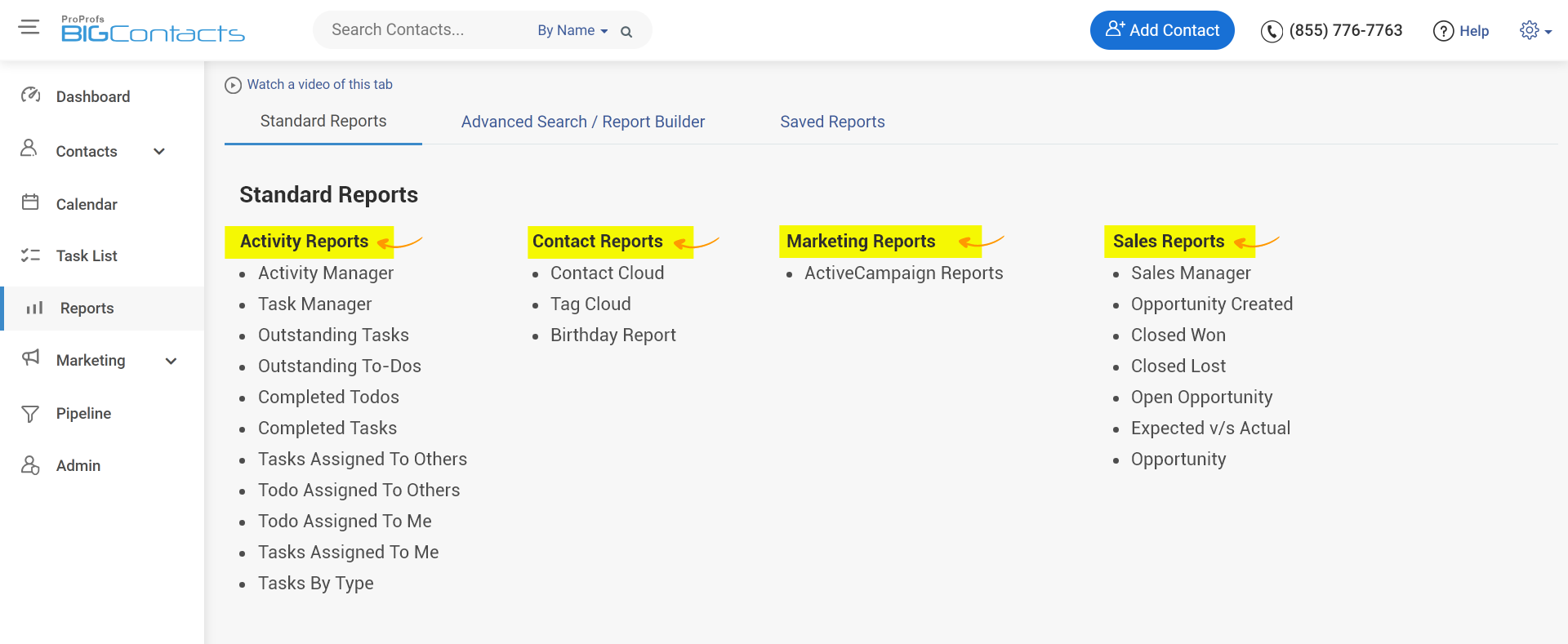
6. Quicker Onboarding
A well-defined sales process ensures quicker onboarding for new team members. With a clear framework to follow, new sales reps can understand their roles and responsibilities faster. This reduces training time and helps them start contributing to the team’s success sooner, leading to increased efficiency and productivity.
7 Key Steps of the Sales Process
The selling process can have several steps, depending on how your sales team interacts with prospects. Each stage includes specific actions to guide the potential customer towards making a final decision.
Although the exact steps may vary based on your business needs and industry, the basic structure remains the same. Here are the key steps in the sales process:
1. Prospecting
A lead is anyone who has shown interest in your business and could become a customer. Prospecting is the process of actively searching for these potential customers. It’s a crucial part of the selling process, as finding new leads is essential for growth.
Sales professionals use various methods to find leads, including cold calls via outbound dialers, referrals, events, inbound marketing, webforms, and surveys.
Each of these outlets helps identify potential customers that the sales team can then focus on converting.
2. Researching
Once you have acquired leads, the next step is to gather more information about them and assess their intent.
Key questions to consider include:
How does your product or service fit into their needs?
Sales reps need to research the company in detail. They should also reach out to the prospect to gauge their likelihood of purchasing. This step is crucial in the sales workflow, as it helps determine if the lead is worth pursuing.
By understanding the prospect’s needs and how your solution fits, you can tailor your approach and increase your chances of closing the deal.
3. Qualification
The qualification step in the sales process is all about determining if a lead is worth pursuing.
At this stage, sales reps gather information to understand if the prospect has a genuine need for the product or service, the budget to afford it, and the authority to make a purchase decision.
This involves asking the right questions and assessing the prospect’s fit with your offering. By qualifying leads early, sales teams can focus their efforts on prospects who are most likely to convert, saving time and resources.
4. Proposal
Once the prospect is marked suitable for the sales process, the sales representative should contact them with a compelling pitch. This includes providing a product demonstration to showcase its functionality and how it can address their specific problems.
Each proposal must be tailored to the prospect’s unique needs. This process is time-consuming and requires a deep understanding of the customer’s needs and preferences.
CRM tools can assist in this task. For instance, BIGContacts allows sales professionals to gather and organize contacts profiles in one place. By monitoring prospects’ online activity, preferences, purchasing behavior, etc., sales reps can personalize their interactions and make their pitches more relevant.
5. Evaluation
After delivering the proposal and demonstration, the prospect begins evaluating the product against their business requirements. At this stage in the sales process, sales representatives should be ready to answer any questions the prospect may have about the product.
They need to be prepared to address any objections or concerns that arise. Regular follow-ups are crucial to ensure the prospect receives the assistance they need to make a purchase decision.
By staying engaged and responsive, sales reps can guide prospects through the evaluation process and help them feel confident in buying.
6. Negotiation & Closing
The negotiation and closing step is where deals are finalized. At this stage, sales representatives work with the prospect to address any final concerns, negotiate terms, and agree on pricing.
It’s crucial to be flexible yet firm, ensuring that both parties feel satisfied with the agreement. Clear communication and understanding of the prospect’s needs are key to successful negotiations.
Once terms are agreed upon, the sales rep can move forward with closing the deal, securing a commitment, and finalizing the sale.
7. Post-Sale Relationship
The post-sale relationship is crucial for long-term success. Once a sale is made, it is important to continue engaging with the customer to ensure they are satisfied with the product or service.
This can include follow-up calls, providing additional resources, and offering support as needed. Building a strong post-sale relationship helps gain customer loyalty, encourage repeat business, and generate positive referrals.
It’s about showing the customer that you value their business and are committed to their success even after completing the sale.
How to Organize Your Sales Process Using Sales Mapping
Organizing your sales process can be a great option for your business, and one effective way to do this is through sales mapping. Sales mapping involves visually outlining each step of your sales process, making it easier to understand and manage.
Here’s how you can get started:
- Break down your sales cycle into key stages, such as prospecting, qualifying, presenting, handling objections, and closing. This helps you see the big picture and track progress easily.
- For each stage, list the specific actions required and the goals you aim to achieve. For instance, during prospecting, your actions might include cold calls and networking events with the goal of generating new leads.
- Utilize tools like flowcharts or software designed for sales mapping. These visual aids can help you and your team see the entire process at a glance and identify any bottlenecks or areas for improvement.
- Clearly assign tasks to team members for each stage. This ensures each member knows their role and can work efficiently.
- Review your sales map regularly and adjust as needed. This keeps your process dynamic and responsive to market fluctuations or business needs.
By using sales mapping, you can easily organize your sales process, making it more efficient and easier to manage. It provides a clear framework for your team to follow, ensuring consistency in your sales efforts.
You can also use CRM tools to manage leads for your small or medium-sized business at different sales stages. It helps you track sales easily. Here’s a short video on the benefits of implementing such a solution-
How to Create a Sales Process?
Now that you have a fair idea of what a sales process is, it’s time to understand how to build one for your business.
Creating a sales process can help your team stay organized and accountable.
To create a sales process for your business, you need to –
1. Understanding the Current Workflow
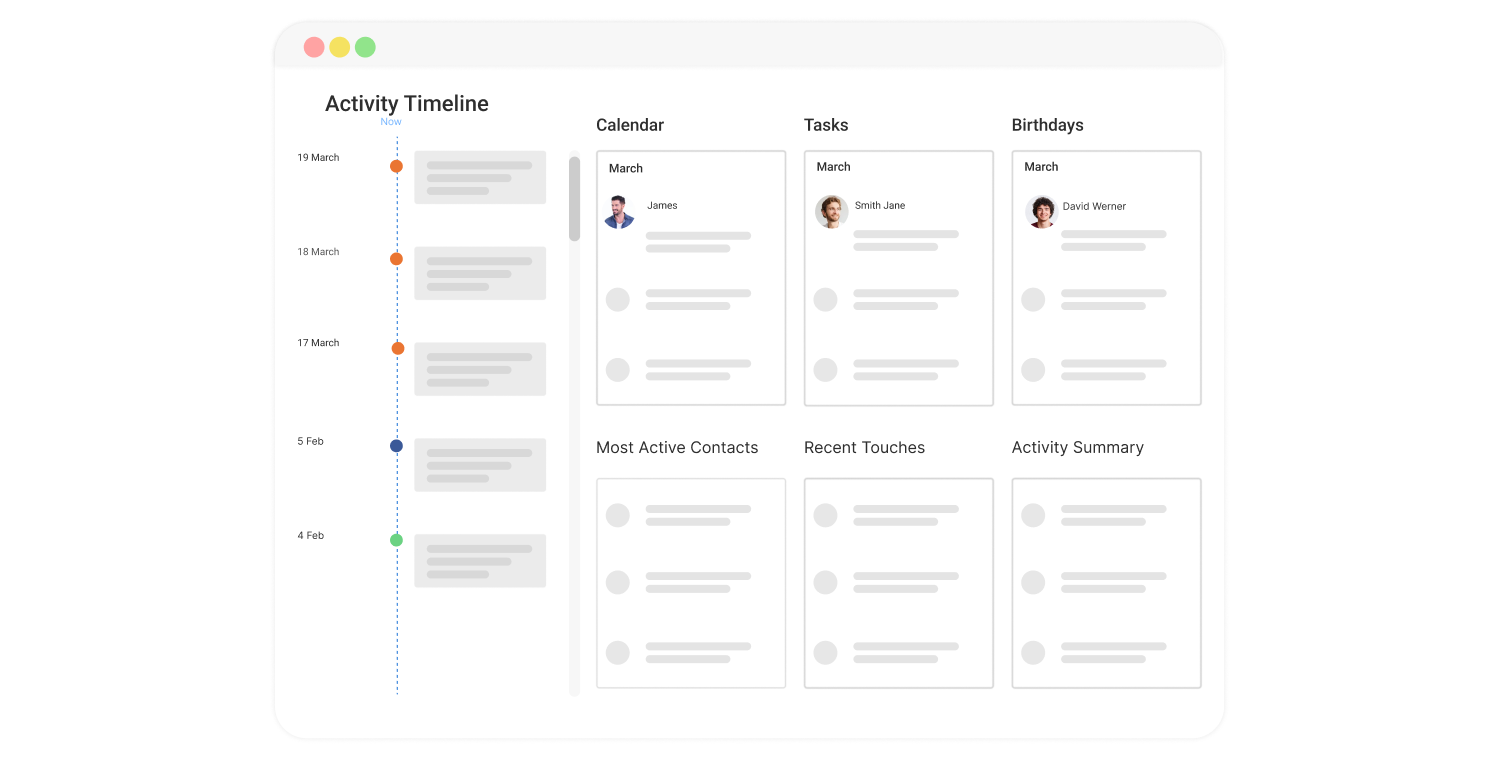
Even if you do not have a standardized sales process, your sales team likely follows some form of routine for converting leads.
Understand the approach undertaken by your sales team. Make a note of how they generate and manage leads.
Discover actions that are effective in converting leads and include them in your sales process.
Make sure that the process you build is not entirely alien to what your sales team is used to working with.
2. Know Your Goals
Understanding your requirements and goals is the most critical step in building a sales flow process. Start by defining your business objectives, as this will guide the development of your sales process.
Identify your team’s challenges, consider industry requirements and market trends, and pinpoint key performance indicators. Additionally, understand your customer profiles and their expectations, and align these with your long-term growth objectives.
Considering these factors can help you develop a structured and comprehensive sales process that maximizes your sales potential and drives your business forward.
3. Get Sales Reps Onboard
Building a process that aligns with the needs of the sales team can drive adoption.
Therefore, it is crucial to involve them in creating the process, understand their concerns regarding the existing process, and seek their feedback on optimizing the selling process and boosting sales productivity.
Find out where the most opportunities get stalled, what common objections clients have regarding the product, and which aspects of the process are the most inefficient for the sales representatives.
4. Build a Sales Process
Once you have acquired the necessary information, you must assemble it to build the sales process.
Map out your sales process with all the stages you wish to include.
By clearly defining the broad stages of your sales process, you can enable sales representatives to visualize the course of action they need to take to convert leads into customers.
5. Outline Steps for Each Stage
Once you have outlined the major milestones for your sales process, you need to draft detailed action plans for individual steps.
Identify what actions are needed to move prospects along and which stages cause the most delays or lost opportunities. Use this information to define detailed steps for each stage of your sales process.
6. Visualize Customer Journey

Having a clear picture of the customer journey can help you create a more effective sales process that considers customers’ needs and pain points.
You need to examine your sales process from the customer’s perspective to better understand what they need at every stage of the decision-making process.
How well do your operations fit with their needs?
Is there a gap between what they are looking for and what you are offering?
Do your sales actions align with your customer journeys?
Answering these questions can help you build a sales process that produces the desired results, i.e., increased sales.
7. Include Relevant Metrics
Now that you have invested all these efforts in building your sales process, you need to ensure that it is accomplishing what you hoped it would. Therefore, you need to test and improve your sales process routinely.
Figure out which sales metrics carry the most significance for your business and include them in your sales process.
With key performance data available at your fingertips, you can tweak your sales process to optimize results.
Sales Process Flowchart
The following flowchart lists the stages that a sales process is made up of. While you can choose to include additional steps per your needs, the basic skeleton remains the same for most businesses.
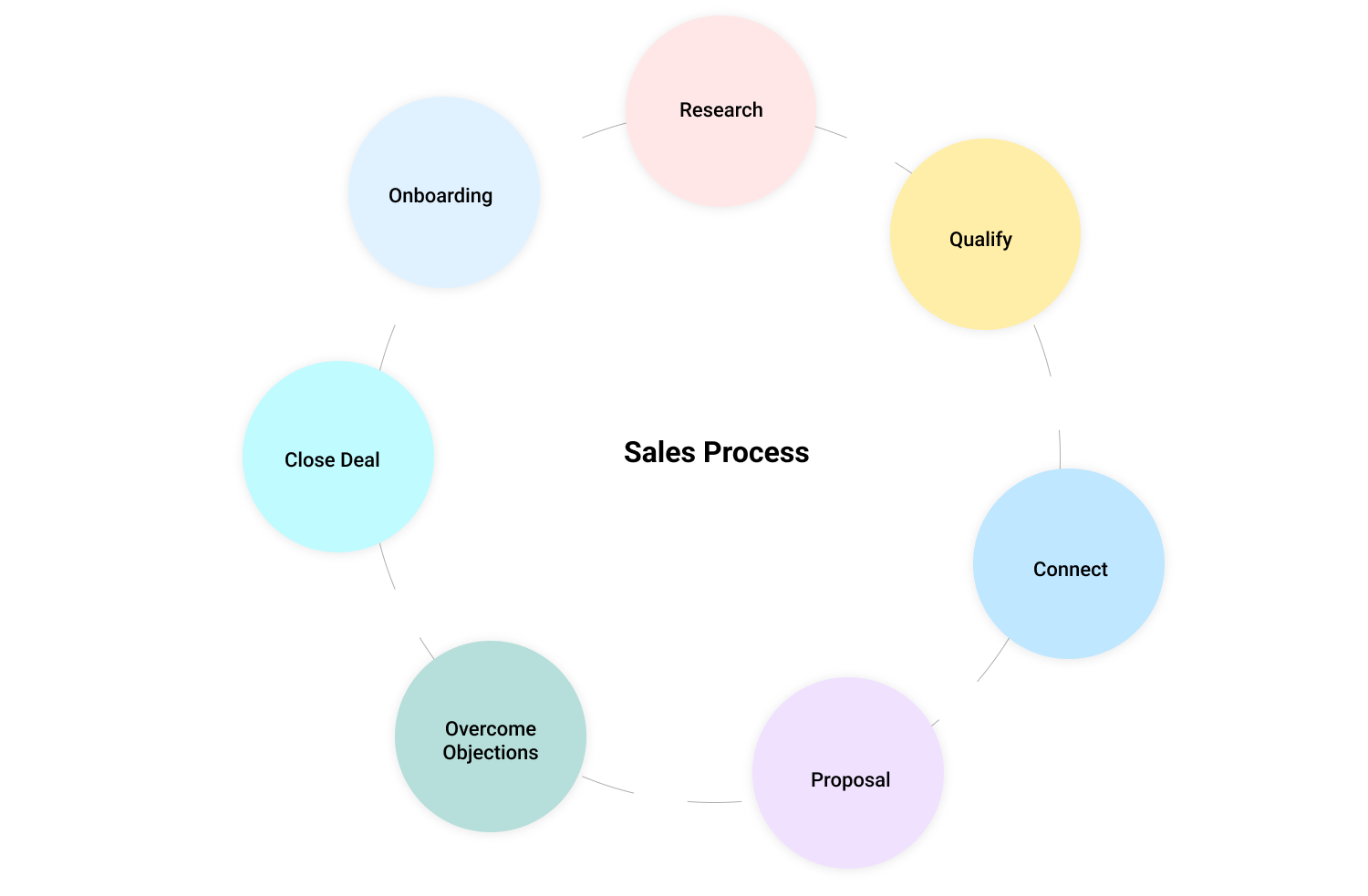
Top 5 Ways to Enhance Your Sales Process
There are various ways to keep the sales process functioning at its maximum potential.
For example, a customer-oriented approach can work wonders for your business. You can also use various sales pipeline management practices to ensure it functions properly.
While there are several other ways to improve effectiveness, here are some of the sales process best practices that you should consider:
1. Measure Performance
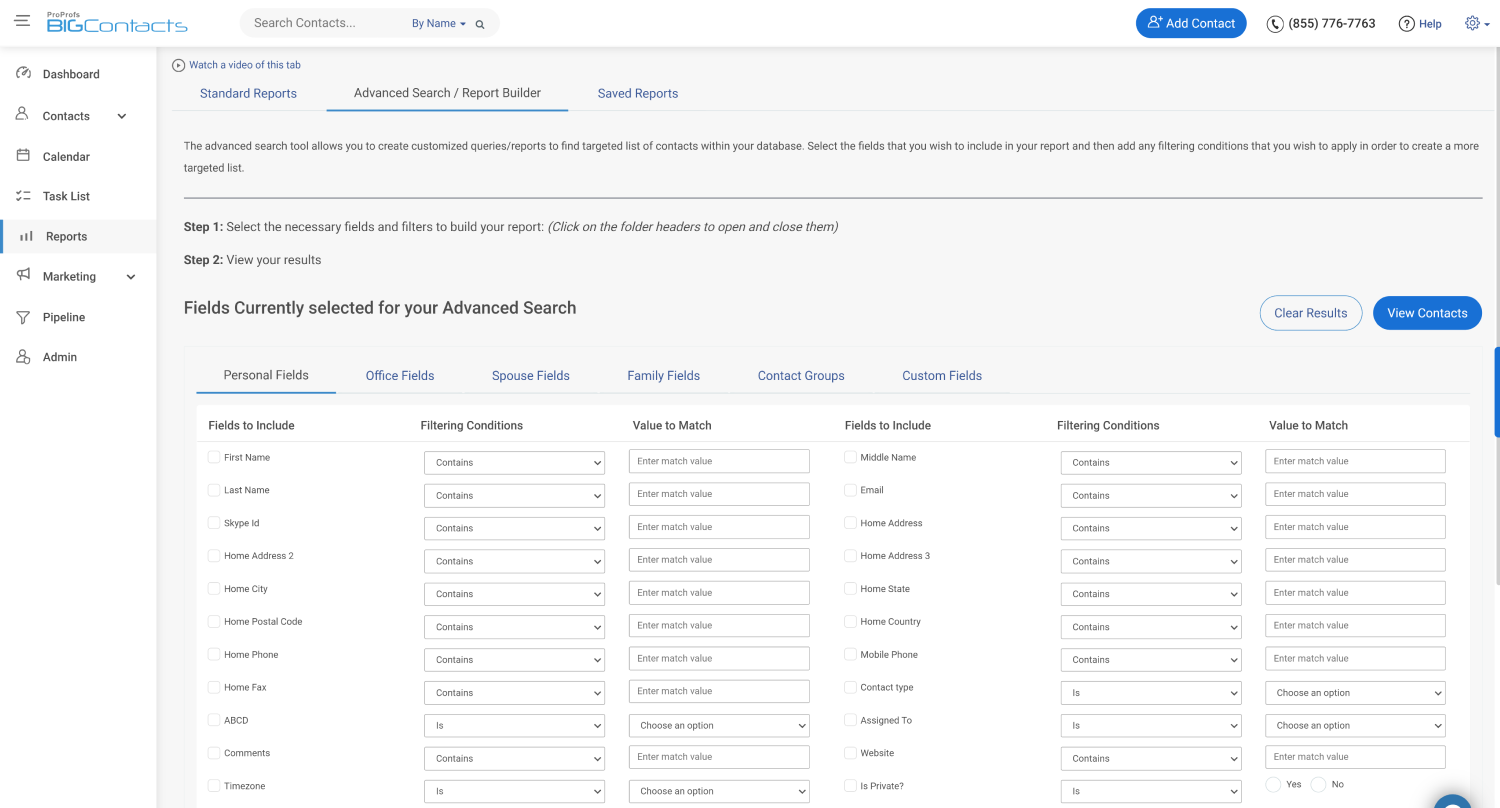
The process will always be a work in progress. Regular maintenance and performance analysis is critical to keep your sales process functional. Run sales reports to track relevant metrics and routinely measure your sales efforts’ effectiveness.
2. Establish Clear Criteria
Establishing clear criteria is essential for a successful sales process. Define what qualifies a lead, the key stages of your sales cycle, and the metrics for success at each stage.
This clarity ensures your team knows exactly what to aim for, reducing confusion and improving efficiency.
3. Seek Feedback From Sales Reps
Your sales representatives witness the effectiveness of the sales process in real-time. Therefore, there is no better source for acquiring insights into the process than sales representatives. Seek regular feedback from them to discover ways of improving the process to make it more productive.
4. Use a CRM Tool
Using the right technology is undeniably crucial for the success of your sales process.
In the absence of a powerful tool to manage and track your sales activities, things can quickly go out of hand.
Implementing a simple CRM system can help your sales team devote less time to administrative tasks and focus more on selling. It can be used to keep the sales workflow process on track and find ways to enhance its performance further.
The following functionalities of a CRM system can help your sales process optimization-
- Pipeline management to streamline your sales pipeline for better visibility and control.
- Activity tracking to monitor all sales activities to stay on top of every opportunity.
- Custom reminders to set personalized reminders to never miss important tasks.
- Reporting & analytics to generate detailed reports and gain insights to drive sales decisions.
- Collaborative tools to enhance team collaboration and communication.
5. Automate Repetitive Tasks
Leverage sales process automation to improve sales performance further.
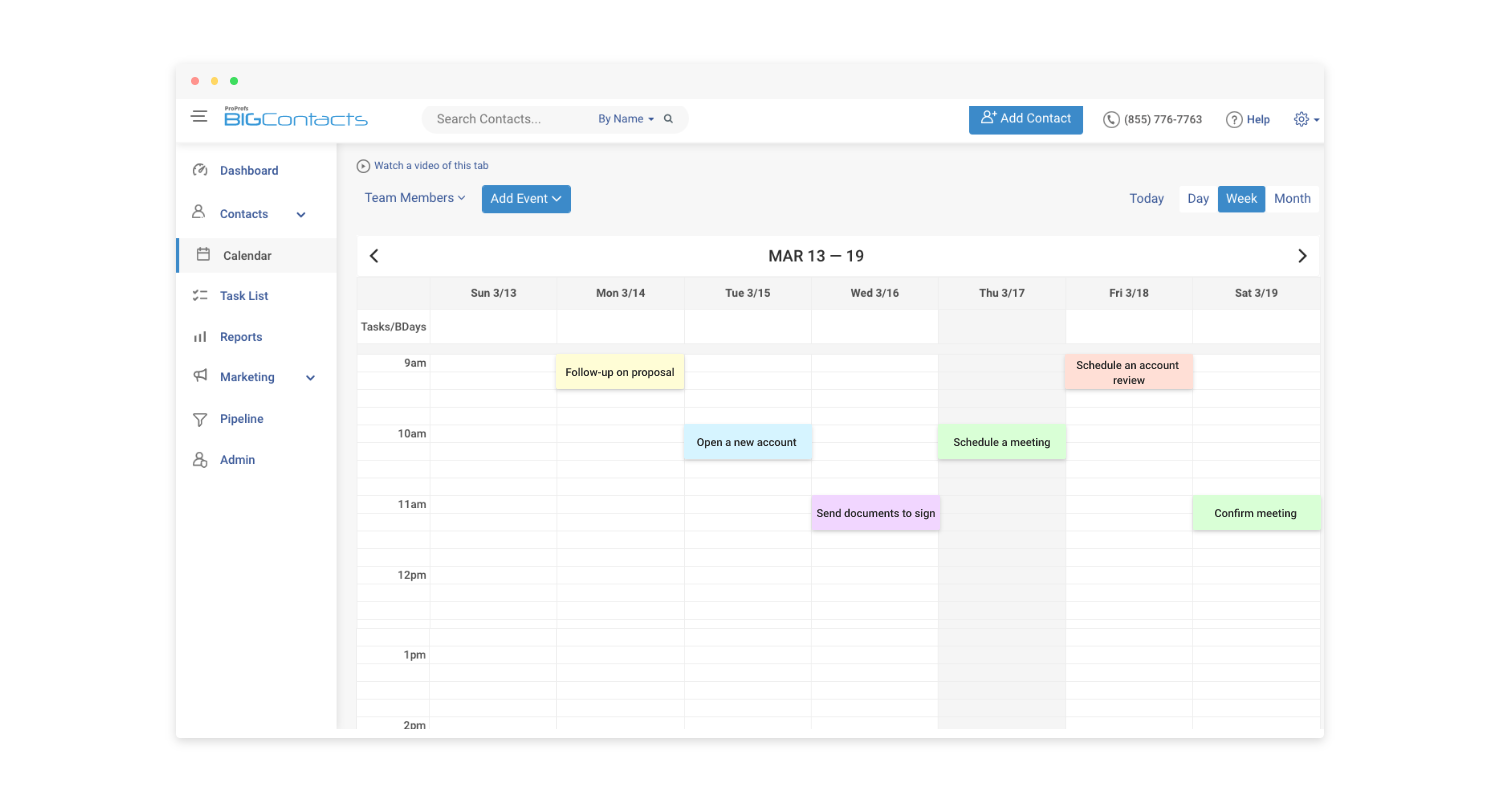
There are several ways to use automation to enhance your sales process.
For instance, you can automate data capturing to eliminate manual data entry for new leads. This increases efficiency and frees up more time for sales reps to engage with the prospects. You can also automate lead distribution or build an automated sales lead process for the team.
Additionally, you can automate the movement of prospects from one stage to the next based on specific triggers. This can keep the leads moving along without any unnecessary delays.
Sales Process vs. Sales Methodology
Understanding the difference between a sales process and a sales methodology is crucial for improving your sales strategy. While the sales process outlines the steps to follow, the sales methodology focuses on the approach and techniques used within those steps.
Sales Process |
Sales Methodology |
| Step-by-step guide: Provides a clear sequence of actions to be followed. | Approach and techniques: Defines the strategies and skills to use in each stage. |
| Defines specific stages: Outlines distinct phases such as prospecting, qualifying, and closing. | Influences execution: Guides how each stage should be approached for maximum effectiveness. |
| Focuses on tasks and actions: Emphasizes the actions to be taken at each step. | Focuses on strategies and skills: Emphasizes the techniques and interpersonal skills needed. |
| Provides a clear roadmap: Offers a structured path from initial contact to closing a sale. | Enhances process effectiveness: Ensures that the sales process is executed efficiently and effectively. |
| Ensures consistency and structure: Maintains a uniform approach across the sales team. | Adapts to different scenarios: Tailors the approach to fit various selling situations and customer needs. |
| Measurement and tracking: Allows for easy tracking of progress and performance metrics. | Customer-centric focus: Often focuses on understanding and meeting customer needs throughout the process. |
What Are the Common Sales Process Mistakes?
Without a well-mapped process of sales, everything is bound to go haywire.
However, even with a formal sales process, some businesses fail to see the expected increase in their numbers.
There are plenty of reasons for these. From ineffective implementation to a lack of proper research, many things can go wrong.
Some of the common mistakes that businesses make when building their sales process are –
1. Considering It to Be Static
Sales processes should evolve with changing market conditions, customer needs, and business goals. If you consider your sales process unchangeable, you risk falling behind competitors and missing opportunities for improvement. Regularly review and update your process to stay agile and effective.
2. Not Defining Every Action & Step
Lack of clarity can lead to inefficiencies and affect your profits. Therefore, it is crucial to define every aspect of the sales process and leave no room for misinterpretation. Offer documentation to help sales professionals understand the process better.
3. Not Measuring Performance
By measuring the performance of your sales process, you can identify if it needs any adjustments. Identify which metrics carry the most weight for your business and track them regularly to ensure that your sales efforts are on the right track.
4. Lack of Alignment With Other Business Divisions
Making sales is not a standalone process. This means you must align your sales process with other business processes. For instance, your marketing team can provide you with insights into customer behavior to supplement your sales process.
5. Not Focusing on the Customers
For the sales process to work, it must be customer-centric. It should focus on providing value to customers and building relationships with them. Merely chasing after numbers may work in the short term but will prove ineffective in the long run.
6. Lack of Automation
One common sales process mistake is the lack of automation. Without automation, tasks like follow-ups, data entry, and lead management can become time-consuming and error-prone.
Implementing tools like CRM systems can streamline your sales process, allowing your team to focus more on building relationships and closing deals rather than getting bogged down in administrative work.
Boost Your Sales With an Effective Sales Process
A consistent sales process can remove inefficiencies and help your sales team be more productive. When building a sales process, take time to identify your business needs and establish a repeatable process that helps you close deals faster.
Continuously monitor this sales process and adapt it according to changing consumer behavior and market trends. By being specific with your goals and incorporating feedback from sales representatives, you can establish a sales process that boosts your revenue.
A powerful CRM and sales tracking software such as BIGContacts can enhance the productivity of your sales process and help you meet your sales targets effortlessly. With automated processes, visual pipelines, email marketing, task tracking, instant alerts, and forecasting capabilities, it can transform your sales process and help you make the most out of it!
Sales Process FAQs
How to better organize, streamline, and automate the sales process?
To better organize, streamline, and automate the sales process, start by using sales process templates to establish a clear workflow. Implement CRM tools to automate routine tasks like follow-ups and data entry. Regularly review and adjust your process to align with market trends and customer behavior, ensuring maximum efficiency and productivity.
What does a good sales process look like?
A good sales process is clear, structured, and adaptable. It includes steps like prospecting, qualifying, presenting, handling objections, and closing. Each stage is well-defined, with specific actions and goals. By examining successful sales process examples, you can tailor a process that fits your business needs, ensuring efficiency and consistency in achieving sales targets.
What are sales process examples & templates?
Sales process examples and templates outline the steps your team should follow to convert prospects into customers. Common examples include lead generation, qualification, product presentation, handling objections, and closing the deal.
Templates provide a structured format, ensuring consistency and efficiency. Using these examples and templates helps streamline your sales efforts and improve overall performance.
What are some of the metrics that can be tracked to measure sales process performance?
Some key metrics to track for measuring sales process performance include lead conversion rate, average deal size, sales cycle length, and win rate. Additionally, tracking the number of new leads, the value of the sales pipeline, and customer acquisition cost can provide valuable insights into the effectiveness and efficiency of your sales process.
How can a CRM System Impact the Sales Process?
A CRM system can significantly impact the sales process by automating routine tasks, organizing customer data, and providing valuable insights. It helps manage leads, track interactions, and accurately forecast sales. With streamlined processes and better customer insights, sales teams can focus on building relationships and closing more deals.
FREE. All Features. FOREVER!
Try our Forever FREE account with all premium features!








